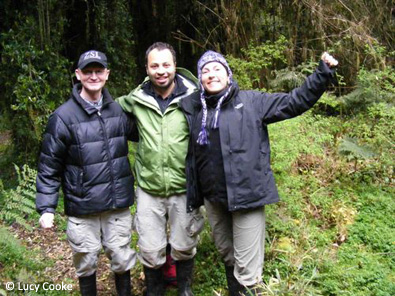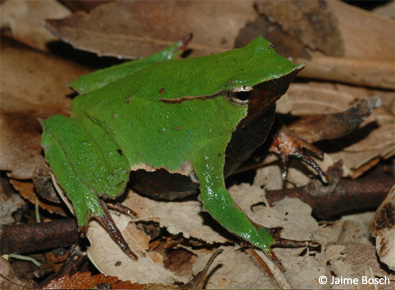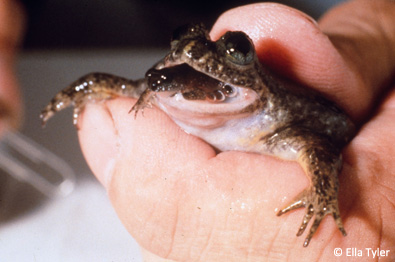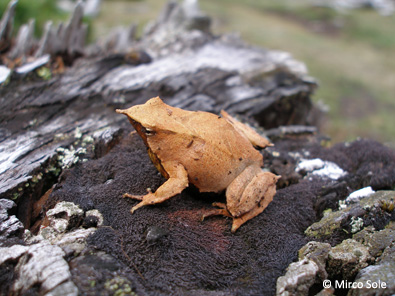Intrepid frog fan and documentary-maker Lucy Cooke recently embarked upon a South American odyssey to document the curious lives of amphibians and highlight the need for their conservation. Her first stop was Chile, to learn about the remarkable Darwin’s frog…
The Amphibian Avenger tackles Darwin’s frogs – by Lucy Cooke
Compared with its South American neighbours, Chile doesn’t have a dizzying array of amphibians (a mere fifty species) but the ones that it does have are almost all totally unique. That’s because Chile is essentially a long thin island isolated by desert to the north, glaciers to the south, sea to the east and the Andes to the west. So despite being part of a vast frog filled continent, Chile’s amphibians have evolved in a bubble, which makes them especially odd and even more vulnerable to extinction. All in all, a great place to start my amphibian odyssey.
I’m here to look for the super freaky and super rare Rhinoderma darwinii or Darwin’s frog, first discovered by the big beard himself in 1835 on his epic Beagle trip.
What makes this frog so special is its extraordinary reproductive strategy. Daddy Darwin’s frogs do something that Will Young can only dream of – they get pregnant. Unlike Mr Young they don’t do it to boost flagging record sales but instead its a means for the species to eschew conventional pond-based metamorphosis in favour of something altogether more sci-fi. After mating, the male guards the fertilised eggs until they are close to hatching and then he gobbles them up. Six weeks later, like a scene out of Alien, he barfs up baby frogs, making this little frog one of the only species of animal in which the male gives birth (the others all being fish from the seahorse family).
Australia’s Platypus frog burbs up babies – something no-one will ever see again…
As such, Darwin’s frog is of great scientific significance as it is now the last of the mouth or gastric brooding frogs left on the planet. Chile’s Northern Darwin’s frog hasn’t been seen or heard for nearly 30 years and Australia’s two species of gastric brooding frogs were wiped out in the 1980’s, most probably by Chytrid. The unique biology of these extinct species could have held clues for the cure to any number of gastric illnesses from stomach ulcers to cancer. Now just the Southern Darwin’s frog is left and their numbers are in decline.
So I’m joining Dr. Andrew Cunningham (one of the group of scientists who first fingered Chytrid as the deadly fungus killing off amphibians, he is basically a world expert on Chytrid) and his PhD student and EDGE Fellow Claudio Soto-Azat (who is studying and conserving Darwin’s frogs here in Chile) on an expedition to Chilean Patagonia to find out if the critically endangered Darwin’s frog has been infected by the evil fungus.
Thank you Lucy! To follow Lucy’s blog click here.



